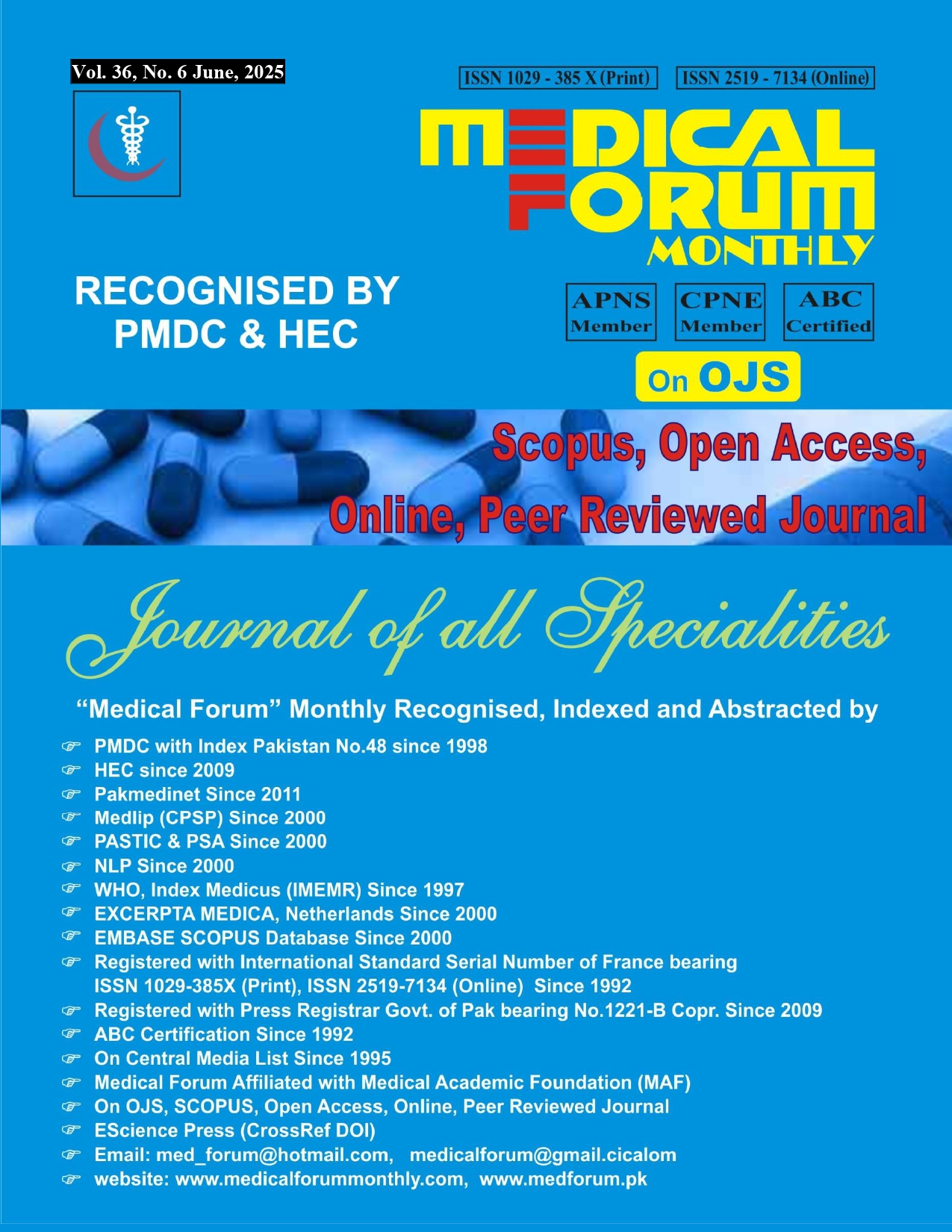Frequency of Hearing Loss in Children with Adenoid Hypertrophy
DOI:
https://doi.org/10.60110/medforum.360605Keywords:
Adenoids hypertrophies, hearing loss, AudiometryAbstract
Objective: To determine the frequency of hearing loss in children with adenoid hypertrophy.
Study Design: Descriptive, cross sectional study.
Place and Duration of Study: This study was conducted at the Department of Otorhinolaryngology, Sir Ganga Ram Hospital, Lahore from August 2, 2024, and February 1, 2025.
Methods: Total 95 patients with adenoid hypertrophy who are between the ages of 1 to 15 years were included, regardless of gender. cleft palate, bleeding disorders, sinonasal polyposis, choanal atresia, a significant deviated nasal septum, tumors of the nose and nasopharynx, ototoxic medication use, acoustic neurinoma, middle ear diseases, abnormal tympanometric curves, or barotrauma in their anamnesis were not included. A calibrated digital audiometer, the ALPS AD 2100, was used for the audiometric testing, which was conducted in a noise-free office setting. The hearing threshold for each ear was assessed between 250 and 8 kHz, and a threshold of more than 35 dB was considered to be suggestive of hearing loss.
Results: The mean age in this study was 8.71 ± 2.79 years, with a range of 1 to 15 years. 51 patients, or 53.68% of the total, were between the ages of 9 and 15. With a male to female ratio of 1.7:1, 60 (63.16%) of the 95 patients
were men and 35 (30.84%) were women. In our study, the average length of illness was 6.47 ± 1.74 months. The average adenoid size was 2.67 ± 1.14 cm. 45 patients (47.37%) in our study had hearing loss in children with
adenoid hypertrophy.
Conclusion: The study's findings demonstrate the high frequency and wide range of hearing loss in kids with hypertrophic adenoids, with mild conductive hearing loss being particularly common.


































 This work is licensed under a
This work is licensed under a 